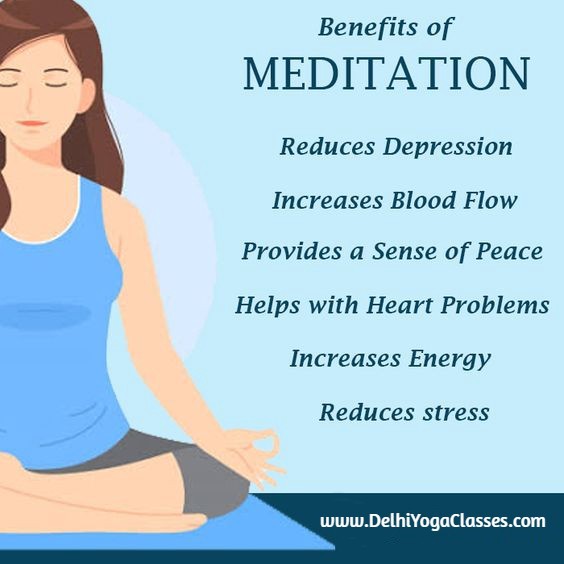
Meditation has been called religious or secular depending on how one defines it. It was originally used to describe spiritual practices but is now commonly used in a double sense. There are many misconceptions about meditation. Here are some facts to help you understand meditation. Here are some thoughts to help you determine if meditation can be considered religious. A common myth about meditation is that it is a form of worship. This is not true. It is non-religious, and it is appropriate for everyone.
There are many forms of meditation. Many of them are religiously based, but not all are recognized as such by all faiths. Early Christian practices relied on repeated prayers and synchronized breathing. Eastern Orthodox and Jesuit traditions use icons as their focus of meditation. Other Buddhist and Western medical practitioners use imagery and imagination to internalize the teachings of Christ. No matter what the specific form of meditation, it is considered religious. It is possible to read a book or search online for information about the roots of meditation if you are not sure.

There is no specific religious connection between meditation and Buddhism. It is a mental exercise that benefits the brain, and not a religious practice. It is still a common activity over the centuries. It can help strengthen the mind, which is vital for its development. There are many kinds of meditation. Each one has a specific purpose. Meditation, no matter its origin, is a powerful tool in mental health.
Some people believe that meditation is a form of prayer. It is possible to define prayer differently depending on how it is practiced. Prayer, in most cases, is a request to a deity and involves dialogue. There is a wider definition of prayer. It involves cultivating and shaping one's mind, as well as qualities like immeasurable love. Meditation is considered a religion. Important distinctions between prayer and meditation are made. But the practice of meditation is still an excellent technique for healing, clearing your mind, and reaching insight.
Each person is different and meditation can be done in a variety of ways. Although meditation is not considered religious, it can be used in spiritual settings. It has many benefits, such as helping people focus on a particular thought. It can be used to achieve a peaceful mind. It can be used as a tool to focus your attention on a particular object, such as a flower, or for other purposes. It is a powerful method to help you achieve this goal.

Meditation is not a religion. Instead, it is a transformational tool that can be used for a wide range of purposes. Although it can be used to express oneself, meditation is grounded in good values. Meditation can be used to help improve one's life and make others happier. If this is not your intention, it's not religious.
FAQ
How often should I exercise
Exercise is essential for maintaining a healthy lifestyle. However, there isn't a set amount of time you must spend working out. Finding something that you love and sticking with it is the key.
When you exercise three times per week, aim for 20-30 minutes moderate intensity. Moderate intensity will mean that you'll continue to be exerting yourself afterward. This type of workout burns around 300 calories.
For those who prefer to walk, you can go for 10-minute walks four times a week. Walking is low in impact and easy for your joints.
Jogging is an alternative to running. You can do it for as little as 15 minutes each day. Running is an excellent way to lose weight and tone your muscles.
Start slowly if you aren't used to doing exercise. You can start with only 5 minutes per week of cardio. Gradually increase duration until you achieve your goal.
What's the difference between fat or sugar?
Fat can be a source of energy that is obtained from food. Sugar is naturally found in fruits and veggies. Both sugars and fats have the same calories. However, fats contain more than twice as many calories as sugars.
Fats are stored in your body and can cause obesity. They can cause cholesterol buildup, which can lead you to heart attacks and strokes.
Sugars are quickly absorbed by the body and provide instant energy. This causes blood glucose to rise. High blood glucose levels can pose a danger because they increase the chance of developing type II Diabetes.
What can you do if your immune system is weak?
Human bodies are made up of trillions upon trillions of cells. Each cell is responsible for creating organs and tissues with specific functions. One cell is replaced by another when it dies. The chemical signals known as hormones are used to communicate between cells. Hormones regulate all bodily functions from growth and developmental to metabolism and immunity.
Hormones are chemical substances that glands secrete throughout the body. They circulate through the blood stream and act as messengers to regulate how our bodies function. Some hormones are produced internally while others are made outside of the body.
Hormone production begins when a hormone-producing gland releases its contents into the bloodstream. Once hormones are released, they move through the body to reach their target organ. In some cases, hormones remain active only for a short period of time. Some hormones remain active for longer periods of time and can continue to have an impact on the body's function long after they are gone.
Some hormones are produced in large quantities. Some hormones are produced in large quantities.
Some hormones are only produced at certain times in your life. Estrogen is one example. It's produced in puberty, pregnancy and menopause. Estrogen assists women with breast development, bone density, and osteoporosis prevention. Estrogen promotes hair growth, and skin stays soft and smooth.
How does an antibiotic work?
Antibiotics kill harmful bacteria. Antibiotics are used to treat bacterial infections. There are many different types of antibiotics. Some can be taken orally while others are injected. Others are topically applied.
Many people who have been exposed can be prescribed antibiotics. If someone has chicken pox, they might need to take an oral antibiotic in order to prevent shingles. A penicillin injection might be given to prevent pneumonia in someone who has had strep.
Children should not be given antibiotics without the consent of a doctor. Children are at greater risk than adults for developing serious side effects from taking antibiotics.
Diarrhea, the most common side-effect of antibiotics, is probably diarrhea. Other possible side effects include diarrhea, nausea and vomiting, allergy reactions, dizziness, dizziness, stomach cramps, nausea, vomiting or allergic reactions. These symptoms usually go away after treatment ends.
What is the difference between a virus and a bacterium?
A virus is a microscopic organism which cannot reproduce outside of its host cell. A bacterium can be described as a single-celled organism which reproduces by splitting in two. Viruses can be as small as 20 nanometers, while bacteria can grow up to 1 micron.
Viruses are often spread through contact of infected bodily fluids like saliva, urine or semen. Bacteria are often spread via direct contact with contaminated surfaces or objects.
Viral infections can be transmitted through skin cuts, scrapes and bites. They may also enter through the nose, mouth, eyes, ears, vagina, rectum , or anus.
Bacteria can enter our bodies through wounds, cuts, scrapes, burns, insect stings, or other breaks in our skin. They may also come into our bodies through food, water, air, soil, dust, or animals.
Viruses and bacteria both cause illness. However, viruses cannot reproduce within their hosts. Viral infections can only cause diseases in living cells.
Bacteria can cause illness by multiplying in the body. They can invade other areas of the body. We need antibiotics to get rid of them.
Statistics
- nutrients.[17]X Research sourceWhole grains to try include: 100% whole wheat pasta and bread, brown rice, whole grain oats, farro, millet, quinoa, and barley. (wikihow.com)
- WHO recommends consuming less than 5% of total energy intake for additional health benefits. (who.int)
- The Dietary Guidelines for Americans recommend keeping added sugar intake below 10% of your daily calorie intake, while the World Health Organization recommends slashing added sugars to 5% or less of your daily calories for optimal health (59Trusted (healthline.com)
- WHO recommends reducing saturated fats to less than 10% of total energy intake; reducing trans-fats to less than 1% of total energy intake; and replacing both saturated fats and trans-fats to unsaturated fats. (who.int)
External Links
How To
How to keep motivated to stick with healthy eating and exercise
Motivation tips for staying healthy
Motivational Tips to Stay Healthy
-
Write down your goals
-
Set realistic goals
-
Be consistent
-
Reward yourself when you achieve your goal
-
If you fail the first time, don't lose heart
-
Have fun